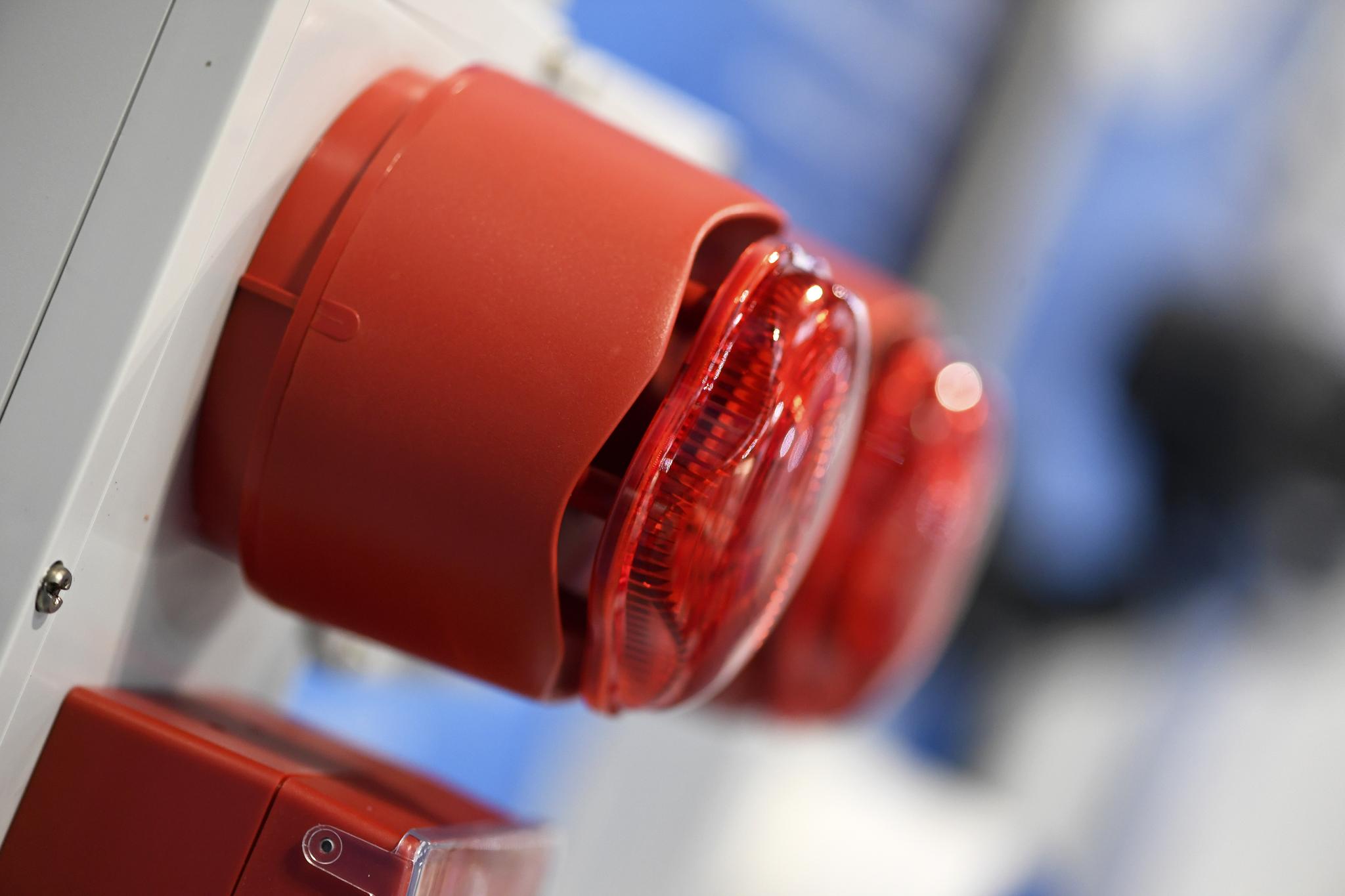WHY WIRELESS TECHNOLOGY REDUCES THE NEED FOR WAKING WATCHES
)
Stephen Marsh, Head of Sales at Cygnus, explains why the 100% wireless and EN 54 certified fire detection and alarm systems, SmartNet, should be installed as a way to replace the temporary measure of Waking Watches.
According to data from the London Fire Brigade, over 1,000 buildings in London need “Waking Watches” in place* due to fire safety issues. This is just data for London so imagine what the picture looks like for the whole of the UK.
Let’s take a look at Waking Watches first. What are they and why are they in place?
The Government defines waking watch as a system whereby suitably trained persons continually patrol all floors and the exterior perimeter of the building in order to detect a fire, raise the alarm, and carry out the role of evacuation management**. Its aim is to ensure that occupants have sufficient warning in the event of a fire and is required if dangerous cladding has been found on the building or if any fire safety issues mean the ‘stay put’ evacuation policy needs to change to simultaneous evacuation.
If the buildings policy changes to a simultaneous evacuation, it must be delivered with appropriate interim measures so that any evacuation can be achieved safely, and these measures can take a number of forms. Dynamic measures often involve a Waking Watch being put in place whilst static measures include the installation of fire alarm systems or other mitigating building alterations.
If a Waking Watch is put in place, it means 24-hour patrols are required to look for signs of a fire.
According to data collected from June to September 2020 by the Ministry of Housing, Communities and Local Government (MHCLG), the median monthly Waking Watch cost per building is £11,361 and the median monthly Waking Watch cost per dwelling is £137***.
Although a programme of remediation is in place, for some homeowners and tenants, there is no end in sight. It could be two, three or five years until the cladding on some buildings can be replaced leaving occupants, building owners and property management companies with on-going costs and inevitable worry.
The National Fire Chiefs Council (NFCC) did provide guidance in its fourth edition stating that where a Waking Watch is implemented, as soon as practicable but within a month, the Responsible Persons should make a plan for implementing sustainable means for supporting the evacuation strategy to allow the building to transition away from a Waking Watch****.
With some people still awaiting remediation work to commence and uncertainties surrounding the costs and responsibility for recladding, what can be done to support those responsible for buildings and tenants to reduce the need for Waking Watches?
SmartNet is the Solution
The SmartNet wireless system can make the process of installing and commissioning simple and efficient, with minimal disruption to the building or occupants.
Utilising the renowned and patented Cygnus wireless mesh protocol, SmartNet offers a reliable, robust and adaptable solution that is up to twenty times faster to install than other systems. It is the world’s first 100% wireless and EN 54 certified fire detection and alarm system that rapidly detects and alerts users to signs of smoke or heat, whilst also being resilient to false alarms.
As SmartNet is 100% wireless it eliminates the need for costly and time-consuming cabling, which is extremely important in an occupied building. It ensures minimal disruption for tenants and means a system can be installed in a matter of days. The powerful mesh network reduces the need for radio surveys to speed-up installation further.
The SmartNet system is built on a combination of wireless radio devices, operating on a self-forming, self-healing mesh network making it a robust and reliable solution, bringing confidence to building managers to stand down the Waking Watch.
The SmartNet products include the scalable SmartNet-Pro, which ranges from a panel capability of 511 devices and up to 96 zones with the ability to network up to five panels providing a combined solution of 2555 devices. The cost-effective SmartNet-100 range enables systems with up to 100 devices from one control panel. Cygnus offers a fire detection and alarm solution to meet diverse project requirements.
At Cygnus, we have supported and supplied a number of systems for Waking Watch requirements. This has created a higher level of protection and safety to occupiers, providing peace of mind. In addition, the system causes minimal disruption during installation and saves significant ongoing costs. Cygnus SmartNet is the perfect solution for this and similar applications.
Government funding
The Government provided additional funding which was aimed at incentivising the installation of fire alarms and protecting more residents in more buildings pending their full remediation or the provision of long-term mitigation measures. This funding has recently closed for applications, but a number of building owners and management companies will now have funding in place and ready to take action.
Now is an ideal time to speak to your customers and explain the benefits of installing Cygnus’ world first 100% wireless and EN 54 certified fire detection and alarm system, SmartNet.
Waking Watches are costly and concerning for tenants. A SmartNet wireless fire alarm and detection system from Cygnus simply makes sense so get in touch with us today to find out more about our solution.
For more information visit www.cygnus-systems.com.
References
*https://www.bbc.co.uk/news/uk-england-london-60291553
**** https://nfcc.org.uk/new-edition-of-the-simultaneous-evacuation-guidance-seg-published/


.png)
.png)
.png)
.png)

